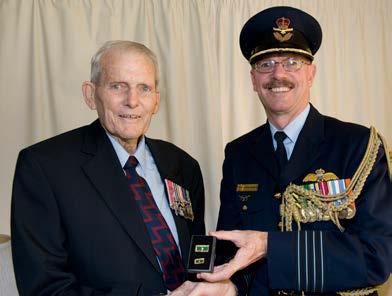
3 minute read
A LONG TAN LEGEND REMEMBERS
By Judith Martin
The New Zealand veteran, who spoke to Army News from his Blenheim home, was Morrie Stanley’s radio operator at the Battle of Long Tan attached to Delta Company 6 RAR. Morrie Stanley was credited with saving D Coy from being overrun that day in August 1966.

Morrie Stanley and Willie made up the forward observer team directing artillery fire, as members of D Company tried to hold off up to an estimated 2,500 Viet Cong and North Vietnamese soldiers.
During the battle the third member of the team, Murray Broomhall, was grabbed to bolster numbers to help protect the rear of Company Headquarters from attack.
Morrie Stanley died in 2010. The third member of the FO Team Murray Broomhall is still alive and living in Australia.
The Battle of Long Tan, an iconic battle in Anzac military history, was fought 57 years ago in the midst of a hot, sticky day in a rubber plantation. The four-hour battle began to the sound of small-arms, machine-gun and mortar fire, but the monsoon later accompanied a man-made storm with artillery fire, and the sound of bugles ringing out with wave after wave of enemy attacks.
The battle took place on 18 August 1966: a company of 105 Australian soldiers, plus the three New Zealanders were outnumbered at times by 25 to 1.

Morrie and Willie were at the front line, calling in artillery fire that kept the enemy from trying to encircle D Coy. The enemy force attacked in waves, almost overrunning the besieged Anzacs.
The Anzacs won the Battle of Long Tan due largely to the highly accurate and tremendous volume of gunfire from New Zealand’s 161 Battery, 103 and 105 Batteries of the Royal Australian Artillery directed by the forward observer, the then-Captain Stanley, in direct support of Delta Company, 6th Battalion Royal Australian Regiment. Also in support of D Coy that day was an American 155 Bty located at Nui Dat.
During the intense battle, the supporting batteries fired over 3,000 rounds in support of D Coy. Artillery fire contributed 90 percent of the estimated 500 Vietcong killed and 750 wounded.

The artillery units were said to be the difference between life and death for Delta Company that afternoon, with the guns basically keeping the enemy from encircling and overrunning the company.
Willie, now 79, retired from the New Zealand Army in 1992 in the rank of Warrant Officer Class One. He says he was too busy at the time of the battle to be scared. Maintaining radio communications with the supporting batteries in such horrendous conditions was the number one priority that day.
“Without communications we would have been buggered, nothing else mattered.”
In the weeks leading to the battle D Coy had some minor contacts with the VC. They then found themselves in the rubber plantation with the enemy slowly encircling them.
“It was raining and there was thunder and lightning. The enemy was about 50 metres away,” says Willie. He could hear mortars, machine gun fire, rifle fire, and see the tracers overhead.
“Then the bugles sounded and we knew we were in trouble. We could see the enemy but couldn’t work out exactly how many of them there were.”
The artillery fire kept the enemy back, but the Coy was soon running low on small arms ammunition.
“Originally we were told two Australian helicopters would bring some (ammunition) in. Then we were told they weren’t coming and we thought, ‘Well, that’s it for us.’ But the helicopters did come – the pilots didn’t wait for orders from High Command as they were supposed to.
The guns had to stop firing while the helicopters came in and dropped the blanket-wrapped boxes of ammunition into the mud which was everywhere.
This ammunition drop allowed D coy to survive for a few more hours. The four-hour-long battle ended when Australian armoured personnel carriers with A Coy on board – the “Relief Column” –arrived. “Whoever said, “here comes the cavalry” never said a truer word. The arrival of the APCs broke up an attack that was about to complete the encirclement of D Coy.”
The arrival of the relief column was the turning point. Seventeen Australians died in the battle, with another dying later from wounds.
Thirty-five soldiers were wounded. The next day Willie and others had to bury the dead and police the battlefield of weapons and equipment.
He was awarded a Mention-InDespatches for his actions that day – an oak leaf on his Vietnam War medal signifies the award. He received a US presidential citation, and an Australian Unit gallantry citation.

After his 17 month long tour of duty Willie returned home to his relieved parents who lived in a small logging village north of Taupo. “Mum had originally thought I’d been killed in Long Tan. They were pleased to see me.”
In February 1967 he rejoined QA Sqn, and served in various RSM and instructional roles including an accompanied tour to NZ Force Singapore before its closure in 1989. Willie retired in 1992 after 30 years in the Army. He was awarded the Meritorious Service Medal and the Long Service and Good Conduct Medal.
He attended Harry Smith’s funeral last month in Australia where it was great to catch up with old mates. Does he ever have flash backs of the battle? “I used to have a few, but not now. Life’s pretty good.”








